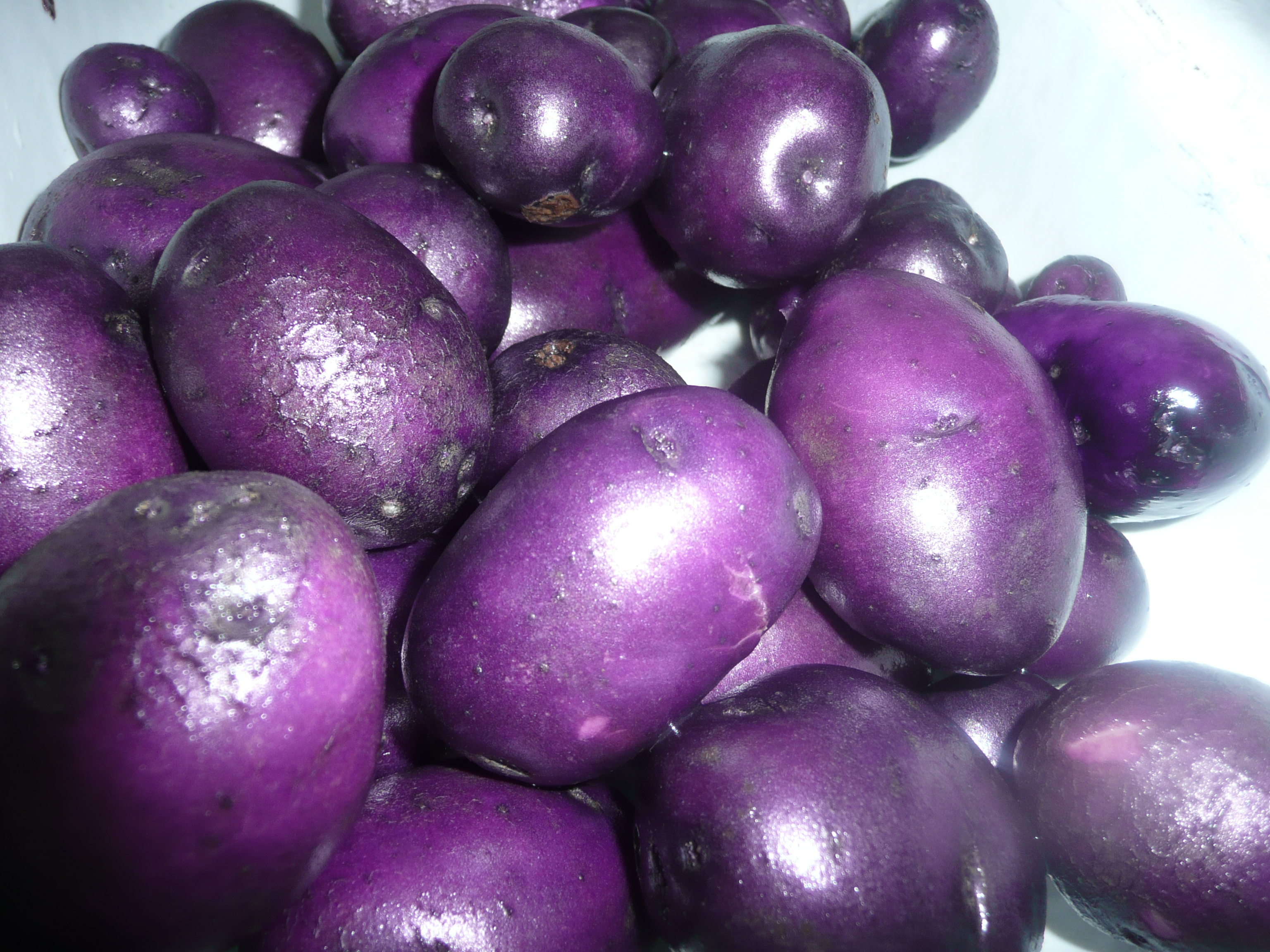
polyphenolic compounds like caffeic acid, scopolin, chlorogenic acid, and ferulic acidĪ small study in eight people found that loading up on one meal of whole purple potatoes increased their blood and urine antioxidant levels.In addition to their high anthocyanin content, purple potatoes pack other antioxidants common to all types of potatoes, including ( 9): They’re the same type of antioxidant found in blueberries and blackberries ( 3, 7, 8).Ī higher anthocyanin intake is linked to several benefits, including healthier cholesterol levels, improved vision and eye health, and a reduced risk of heart disease, certain cancers, and diabetes ( 7, 8). Purple potatoes are especially rich in polyphenol antioxidants called anthocyanins. In fact, they have two to three times more antioxidant activity than white or yellow potatoes ( 7).Īntioxidants are plant compounds that can protect your cells from the damaging effects of oxidative stress. Like other colorful fruits and vegetables, purple potatoes’ bright color is a telltale sign that they’re high in antioxidants. While the starch in purple potatoes increases blood sugar, it does so to less of an extent than the starch in yellow or white varieties. summaryĮating purple potatoes instead of white potatoes is a good move when watching your blood sugar. These compounds may decrease the absorption of starches in the intestines, therefore minimizing purple potato’s impact on blood sugar levels ( 5).Īn animal study observed similar results, finding that feeding purple potato extract to rats resulted in better glucose tolerance and improved short and long-term blood sugar levels ( 6). While all potato varieties impact blood sugar levels because of their carbohydrate content, purple potatoes may exert less of an effect than other types due to their high concentration of polyphenol plant compounds. It ranges from 0 to 100, and a GI greater than 70 is considered high.Ī comparison study in humans found that purple potatoes have a GI of 77, yellow potatoes have a GI of 81, and white potatoes have a GI of 93 ( 5). The glycemic index (GI) is a measure of the extent to which a food raises your blood sugar. They’re especially rich in minerals and boast more potassium than a banana.
Purple potatoes skin#
In addition, a serving of potatoes provides 3 grams of fiber, from both the flesh and skin, and they’re naturally low in sodium ( 3, 4).Īll potatoes, including purple potatoes, are quite nutritious and provide a range of nutrients in both their skin and flesh. Interestingly, potatoes have more potassium than bananas. In fact, more than half of their nutrients are found in their flesh ( 3).Ī 3.5-ounce (100-gram) serving of cooked potato with the skin provides ( 4):

There is a misconception that all of the nutrients in potatoes are found in their skin. Purple potatoes have a nutrient content similar to that of other varieties of potatoes in the Solanum tuberosum family, though their mineral content can vary depending on the soil in which they were grown ( 1, 2, 3). Control potato beetles with Rotenone or by hand picking.īush bean, cabbage family, corn, parsnip, peas.Potatoes often get a bad rap because of their high starch content, but they contain many other important nutrients and can be a very healthy addition to your diet ( 1). Use a sulfur or copper fungicide to help prevent the onset of the disease. The disease appears as dry brown lesions with fluffy white mould on the undersides of the leaves. Storage crops should be left in the ground until light frosts or natural decline cause the tops to wither.īlight is a fungal disease which can cause potatoes to rot in storage. Hill plants when they are 1 foot tall, by hoeing up 6-8 inches of soil around the plant.Įarly potatoes can be dug when tubers reach a usable size.
Purple potatoes cracked#
Maintain even moisture as interruptions in moisture will cause irregular growth spurts resulting in rough, knobby, malformed or cracked tubers. Lime should also be avoided at planting time. Fresh manure will promote development of scab organism. Apply plentiful amounts of compost and well-rotted manure. Potatoes are heavy feeders and require deep fertile soil with good drainage.

Purple potatoes full#
Grow in full sun with soil pH of 5.5-6.5. Closer plantings can result in better yields, but with smaller potatoes.

Leave 10-12 inches between plants in rows 2-3 feet apart. Seed pieces can be planted immediately after cutting, but will generally sprout and show better resistance to decay if, after cutting, are left in a cool, moist room with good ventilation for 3 days. Larger tubers can be cut into pieces weighing about 2 ounces each having at least 1-3 eyes. Small tubers (golf ball size) may be planted whole. Remove tubers from storage and warm to a temperature of 50-60 degrees F, to enhance sprout formation. Tolerant of cool soil and frost, potatoes can be planted in late spring.


 0 kommentar(er)
0 kommentar(er)
